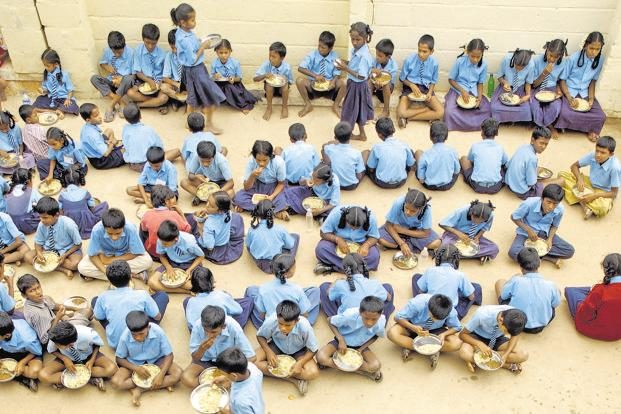In recent times, microcredit schemes have been presented as a panacea, attracting a lot of money around the world. However, a series of trials have shown that microcredit doesn't do much good-often not even increasing average incomes, and burying the poor in debt.
Subsidized crop insurance is another direct approach designed to help generate more income for the poorest of farmers by making agriculture less risky. But how useful is this approach? New research by Munshi Sulaiman, research director of Save the Children International, with Michael Murigi of the University of Sydney, analytically weighs the costs and benefits of this along with other direct approaches to poverty alleviation.
The Pradhan Mantri Fasal Bima Yojana (PMFBY) is the most recent-and most comprehensive-crop insurance model, launched in 2016 and reaching some 39 million farmers. Typically, the insurance premium is almost entirely paid by the Central and state governments. Taking the state of Andhra Pradesh as an example, the researchers find that PMFBY, if expanded from 22% coverage today to 50% coverage in 2024, will cost around Rs2 trillion. This expenditure generates a number of benefits, including the actual insurance payouts, and allows farmers to take higher risks on more valuable crops that rely on bigger levels of rainfall. The insurance safety net means fewer suicides and less malnutrition for farming families.
While protecting farmers from income shocks is an important outcome on its own, the benefit of insurance coverage on farmers' risk-taking behaviour, investment decisions and impact on productivity are the major economic justifications for subsidizing crop insurance. In the long run, two-thirds of the benefits come from the payout and one-quarter from higher profits. In total, every rupee spent on the policy achieves societal good worth about Rs1.40 in Andhra Pradesh, and about Rs1.50 in Rajasthan, another state the researchers looked at. In this case, the direct approach to alleviating poverty by subsidizing insurance does achieve more than it costs, but it can hardly be said that it has dramatic returns.
Another approach is a direct response to poverty that combines very specific interventions in a way that has been shown to have an immediate and sustained impact on food consumption, income, and savings, as well as assets.
Eliminating extreme poverty depends critically on creating sustainable livelihoods for the economically active ultra-poor: households which are landless and primarily rely on casual work for their livelihood. The success of a "graduation approach" in a number of countries has made it a critical tool in social protection schemes. More than 40 countries are now implementing different versions of this model, at various scales. This approach was forged by the world's largest non-governmental organization (NGO), the Bangladesh Rural Advancement Committee (Brac), and is implemented at a small scale by various NGOs in West Bengal, Andhra Pradesh, and Jharkhand.
This model follows a strict set of targeting criteria to reach the ultra-poor and provides time-bound support that usually lasts between 18-24 months. First, food or money is given to the poor to ease the stress of daily survival. Second, beneficiaries are encouraged to start savings. Third, they are provided with livestock or other income-generating assets. Following this, there is training provided in both technical skills and life skills. Finally, beneficiaries are provided with health support.
Each intervention costs more than Rs25,000, with half of this spent on the asset and food. Reaching 30% of poor households would cost Rs1,120 crore in Andhra Pradesh, and Rs1,130 crore in Rajasthan. Based on long-term studies from West Bengal, the increase in annual household consumption, savings and assets will mean every rupee spent will achieve at least Rs3.50 of social benefits and possibly even Rs5-making it two- to three-times as effective as farmer insurance subsidies.
Comment: "Give a man a fish, and you feed him for a day. Teach a man to fish, and you feed him for a lifetime."
The India Consensus is a partnership between Tata Trusts and the Copenhagen Consensus Center, and evidence from research papers in its prioritization projects suggests that less direct, more circuitous approaches to helping the poor could have a much bigger impact.
Research shows that promoting higher quality seeds, for example, would lead to better crop yields, increased production, and higher incomes, with yield gains of 10%. Each rupee spent could generate benefits to Andhra Pradesh worth around 15 times the costs. Investment in nutrition is a cheap way of providing very powerful longer-term assistance: diarrhoea is a major killer of young children, and counselling to mothers to improve breastfeeding, feeding, and hand-washing would cost as little as Rs1,200 per mother reached. This would transform babies' entire lifetimes, meaning each rupee would achieve an astonishing Rs43 of social benefits in Rajasthan, and more than Rs60 in Andhra Pradesh.
Other policies with very high returns that particularly help the worst-off include improving private sector provision of tuberculosis healthcare, and stepping up efforts to detect and treat heart disease.
These aren't what we would think of traditionally as "poverty" policies. But surely it is important to give preference to those approaches that help the poor the most for every rupee spent, no matter how they are labelled. Sometimes, the most ground is gained not by tackling a problem head-on, but by moving laterally.
Bjorn Lomborg and Manorama Bakshi are, respectively, president of the Copenhagen Consensus Center, and senior adviser to the India Consensus project.




Comment: Giving people free money rarely solves any problems, so an approach of aiding in bootstrapping them to be economically productive would likely produce better and longer term results.